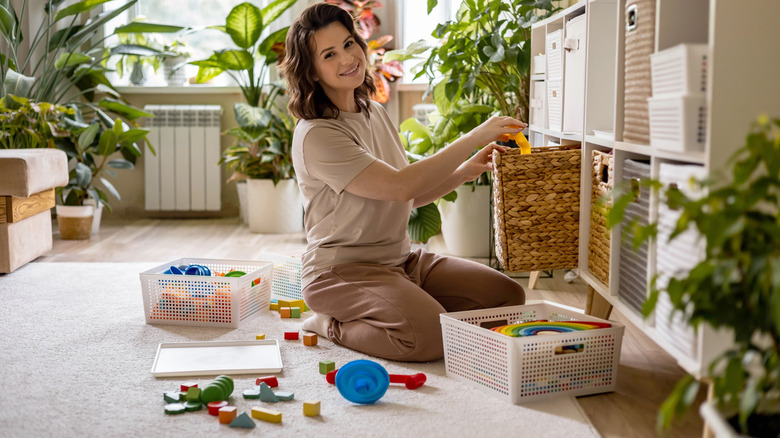Change The Way You Declutter With A Method That Redefines Organization
If you aren't paying attention, certain areas of your home can quickly become crowded and cluttered almost seemingly overnight. One day, it's just a sweater lying over the chair, a few random items in a utility drawer, or countertops that seem to become more invisible each day. And then, before you know it, there is an avalanche about to take place right in your home. While many smart organizational habits will help to declutter your home, there is one specific method that redefines organization and tidiness. The method is referred to as "boundary organizing".
It starts with you first establishing a physical boundary, such as a bathroom closet, home office desk, or kitchen pantry ... a place that's often cluttered. The next step is to pull out everything within the boundary and set it to the side in three piles — keep it, toss it, donate it. From there, you're left with a smaller pile of belongings that should fit within your boundary more comfortably.
Of course, there are ways to modify this method and customize it so that it's better suited for you specifically, but the overall goal is to get a mental picture of what items are just taking up space. You can also combine the strategy with a number of different organizational tools and storage solutions to help keep areas manageable. This approach comes in handy when you start your spring cleaning for the year, as you will find that you have less clutter to deal with moving forward.
More tips on boundary organization
Creating boundaries to organize your home forces you to determine exactly how much space you're willing to dedicate to your belongings. It also gives you insight into what items you use less frequently than you realize, not to mention it can reduce decision fatigue. Common items to get rid of when decluttering often include things like old phone chargers, unused tote bags, and electronic devices (for example, the new massage roller that you used once and haven't touched in six months).
You can create boundaries all over your house. Start by pinpointing certain areas that are commonly cluttered. Next, remove everything and set it in the designated three piles. Once you have your "keep" pile, you can employ even better organization tactics by placing items in small storage containers, separating them with drawer dividers, or even taking advantage of unused wall space. Just remember, if what you want to keep doesn't fit in your boundary space, you might want to go through the items again with more scrutiny, or find a different space for some of those things.
As you're putting things back, you may also find that placing the most frequently used items in the front of your boundary areas is helpful. This allows you to retrieve them easily and keep track of when they need replenishing — something that may be beneficial in bathrooms, kitchen pantries, and accessory drawers.

